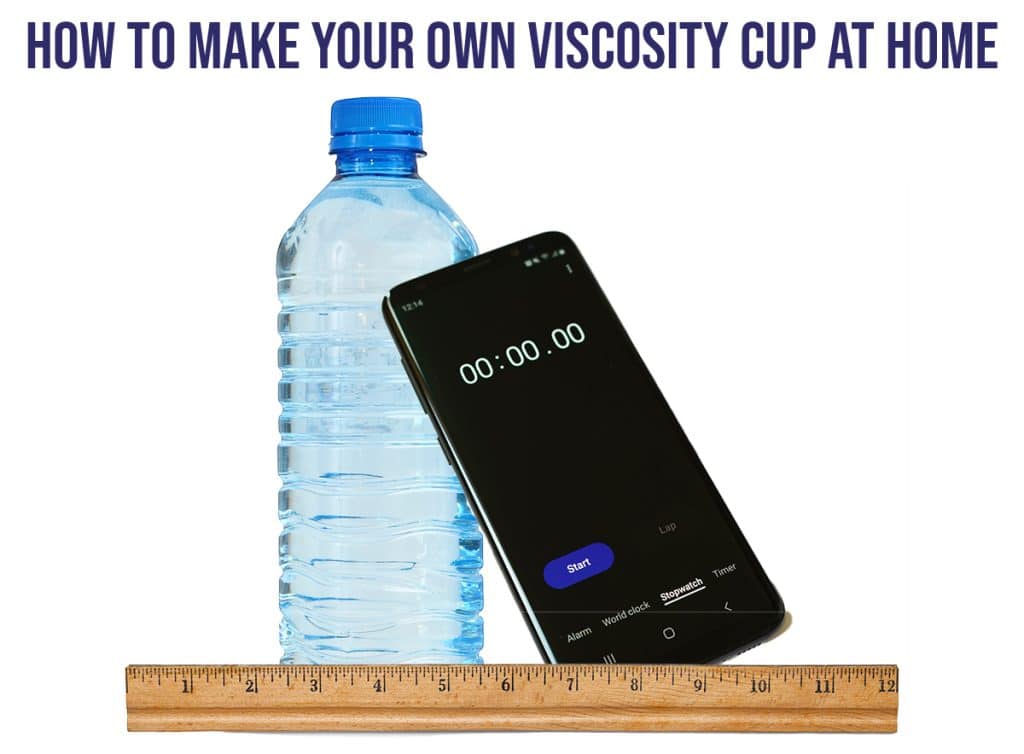What is a Pressure Air Meter and How Do You Replace Parts?
What is a Type B Concrete Pressure Air Meter?
Before learning about concrete air meter assembly, let’s first find out what a meter does and how it works. The concrete pressure air meter measures entrained air in normal weight fresh mixed concrete. A user sets an initial pressure on the meter’s dial gauge. They then seal the lid onto the meter’s base (while full of fresh concrete) and pump air into the meter. Then, they push down on the needle valve lever to allow air to flow out of the meter’s petcocks. The amount of air released moves the dial gauge to show how much air content is in the concrete sample. Concrete air meters are a quick and easy way for technicians to test fresh mixes right on site.
What are the Different Types?
All type b pressure air meters do the same thing in virtually the same exact way. Depending on your preference you may choose one style of air meter over another.
ACM Style Air Meter (ACM-6) – Features an upright pressure chamber and dial gauge. Also features a welded threaded rod and latch tab.
Forney/TestMark Style Air Meter (CA-0500) – Features an upright pressure chamber and dial gauge. Additionally features a separate threaded rod and latch tab to adjust at both ends.
Watts Style Air Meter (H-2786P) – Features an upright pressure chamber and dial gauge. Also features j-hook style latch tabs with u-shaped push down levers.
White Flat Gauge Style Air Meter (HM-265) – Features a flat mounted dial gauge, top carrying handle and side mounted ultra pump. Additionally features c-hook latch tabs and upright style carrying case.
Super Air Meter (SAM1) – Features a digital gauge and upright pressure chamber. Not only finds the air content, but also calculates the air void spacing in concrete samples.
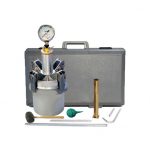

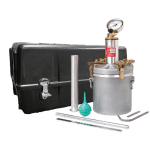
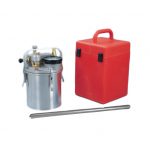
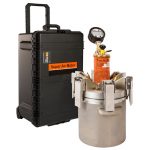
How to Assemble an Air Meter
Concrete air meter assembly requires minimal effort as long as you know the right practices. Watch our video tutorial on how to correctly assemble your air meter after a cleaning or when replacing parts.
Check out our youtube channel for even more product videos and information.
How Do You Know If You Need Replacement Parts?
There is no estimated lifetime on a meter or its parts. It all depends on how often the unit is used and in what type of environment. More often than not, your air meter can last many years as long as you keep up with cleaning, recalibrating and replacing worn out parts. For example, a common problem we see are latch tabs straightening out over multiple uses. This causes the lid to not sit securely onto the base, which will provide inaccurate readings.
To check for air meter leaks, pressurize your meter with your ultra pump while nothing is inside the base. You can then dunk the entire air meter into a 5 gallon bucket of water and wait to see where air bubbles are forming. You can also spray a solution of soap and water onto the pressurized meter and see where bubbles form. Both methods indicate where the leak is occurring and what parts need replacing.
See our full list of replacement parts here.
Looking for someone to clean and calibrate your air meter to like new condition? We can do that for you! Click here to learn more.


